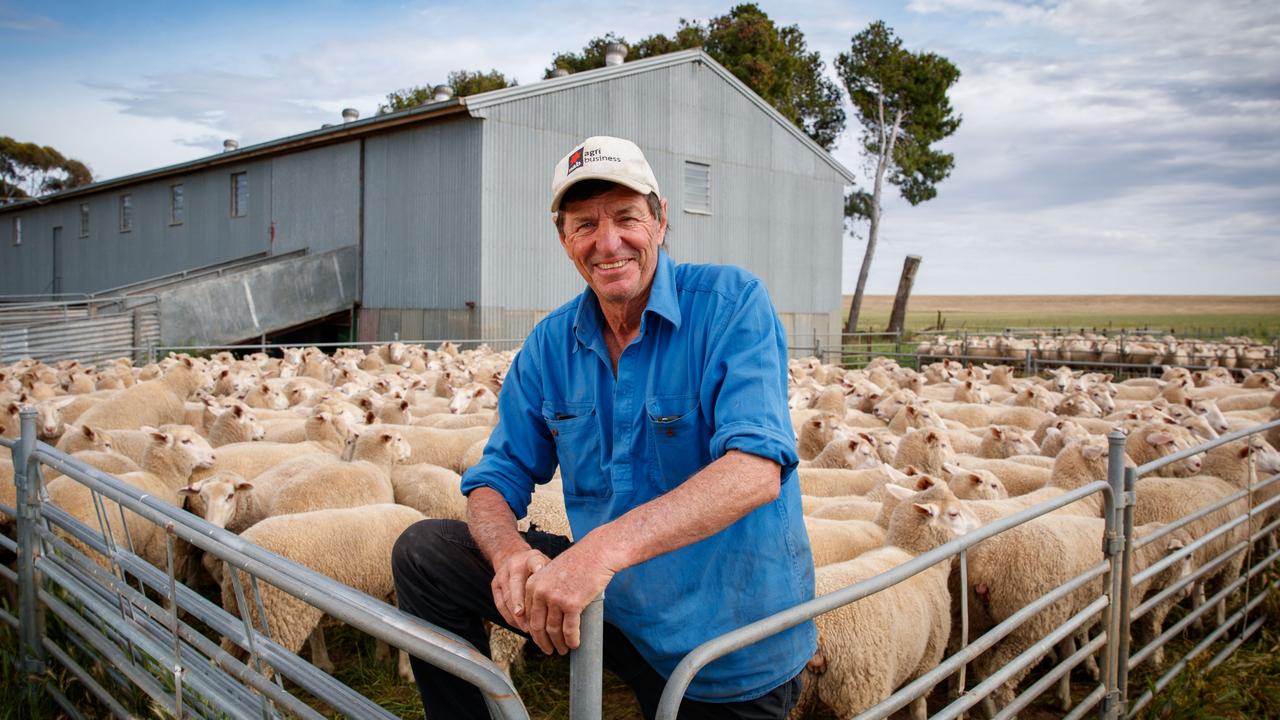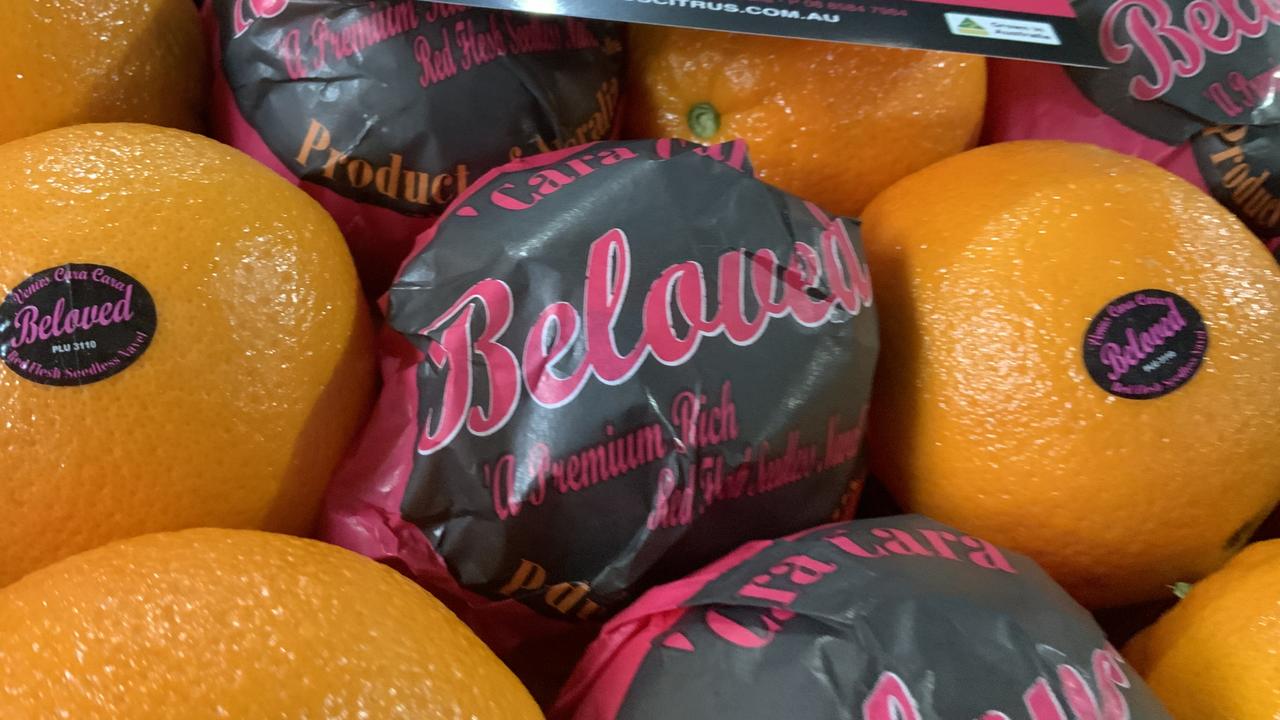Murphy Fresh tomatoes go from strength to strength using latest technology
DEDICATION and innovation have transformed a humble grower into a horticulture powerhouse, writes JAMES WAGSTAFF.
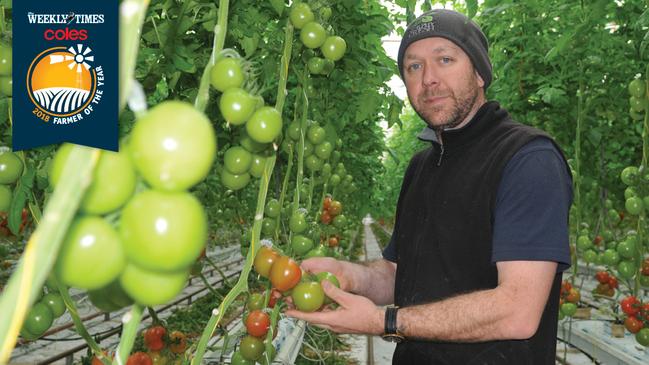
FOR Jon Murphy one of the greatest things about farming is seeing his produce on the supermarket shelves.
“We saw our fruit up in Cairns once and I get text messages from people around the country, so you never really know where it goes when you’re supplying the major chains,” said Jon, whose family business in the foothills of the Victorian alps grows 9.5 million kilograms of glasshouse tomatoes a year for the likes of Woolworths, Coles, Aldi and independent retailers. “It is quite satisfying.”
MORE FARMER OF THE YEAR: JIM HONNER
Jon, his parents Russell and Jill, and brother Sam run Murphy Fresh, which in the space of less than 20 years has grown from a humble tomato-growing business into a major horticulture powerhouse using the latest in growing methods and technology.
The Murphys now have 14.5ha of glasshouses in production spread across two sites with plans in the pipeline to increase this significantly.
MORE FARMER OF THE YEAR: BEN BECK
Not a bad feat for a family with limited farming know-how. Jon grew up in Mt Eliza on the Mornington Peninsula and Russell worked in the wholesale fruit and vegetable trade.
It was until Jill inherited a 102ha slice of her family’s sheep and cattle property just east of Mansfield that they became hands on in the agriculture space. Restricted by size, Russell and Jill began a search for an enterprise that could sustain the family.
MURPHY FRESH
MANSFIELD
HAS 14.5ha of tomatoes in greenhouses on two sites
GROWS up to 80kg of tomatoes per square metre
PRODUCES about 9.5 million kilograms of fruit a year
HAS a further 30ha of land approved for development
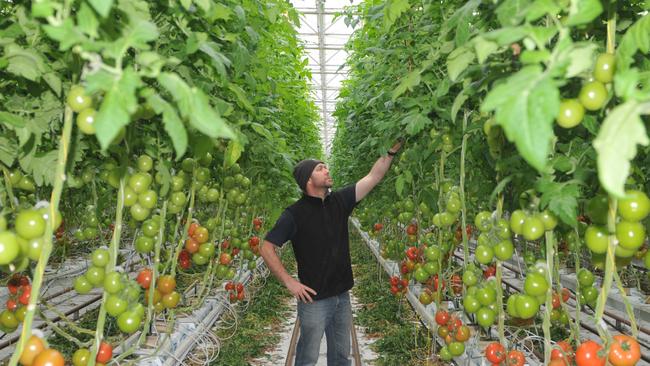
MIXED PLATTER
THEY dabbled in a few sheep, experimented with olives and grew some grapes before, in 1998, Russell ran into his old marketing buddy, Mark Millis, who was a few years into his Flavorite hydroponic tomato venture in West Gippsland.
With his encouragement Russell decided to build a 600 sqm plastic greenhouse on the property to grow tomatoes in 1999. Jon said, back then, the industry was very new with a lot of people selling kit systems. The initial greenhouse was “not really designed to grow tomatoes” with an NFT channel or “growing gully” system “which didn’t work very well”. They soon switched to a “run-to-waste drain system” and “we actually started growing some good tomatoes”.
At this stage, Jon was studying science at university in Melbourne and making ends meet working in pubs and clubs. He then took a break from university and went backpacking through Asia and on his return, at the end of 1999, admits to being “sort of at a loose end”. At this stage Russell was keen to expand the greenhouse operation and asked him to come home and join the business.
In 2000, they purchased an existing 1200 sqm greenhouse from Woodend, which they disassembled, transported to Mansfield and reassembled.
“It was old technology — very basic control systems, we were growing in scurrier pots, everything was manual, we’d be up at 12 o’clock at night trying to get the heaters working,” Jon said. “It was a good introduction and it was challenging but we were making tomatoes. But we were lucky to be getting 30kg a sqm.”
In 2003, the business expanded with another 3500 sqm greenhouse. At the same they upgraded their technology. They got out of growing in scurrier pots in favour of hanging trays and installed a new environmental control system including drip irrigation, heating and recycling.
“We stepped up to similar to where our greenhouses are today, except we were still in plastic sheds,” Jon said. “As part of that upgrade, straight away we came into the yields we were supposed to be getting. Back then 50-55kg per sqm was the benchmark.”
GROW FOR IT
IT also proved a massive learning curve for Jon, who had to learn how to service boilers, install irrigation systems and master computer programs.
“With all those challenges you learn very quickly, you make mistakes and it pushes you to learn more,” he said.
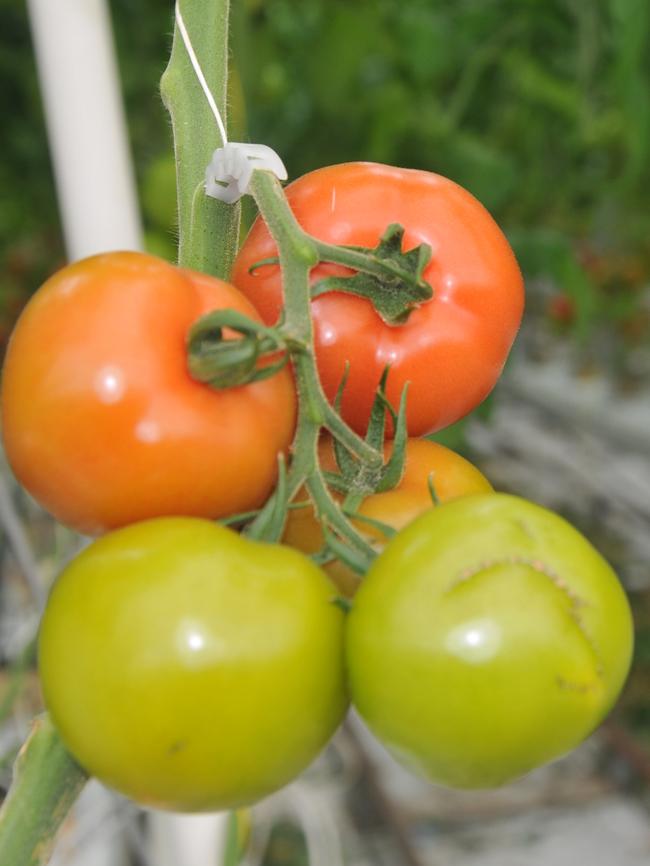
In 2004, Jon met his wife, Tarin, and moved with her to Cairns for a year while he finished university. During his absence, the 1200 sqm greenhouse blew down in a storm. On returning to Mansfield, the Murphys extended the existing 3500 sqm greenhouse into a 5000 sqm structure before building their first 1ha glasshouse in 2006.
So began the challenge of learning to grow in glass conditions. They moved from waste oil heating to heating with briquettes, started recycling water and began pumping CO2 into the glasshouse while shade curtains, as well as a fog system, were introduced.
At that stage they were operating 1.6ha of greenhouses. Three years later, in 2009, a further expansion brought this to 2.6ha with a packing shed boasting a state-of-the-art packing line also added. In 2012 they built and planted another 2.3ha greenhouse bringing the total covered area to just shy of 5ha.
At this stage the Murphys also upgraded their heating system to biomass where “woodchips, sawdust, whatever we can source from timber mills”. The glass was improved in terms of light transmission and they also upgraded things like roof cleaners. Through trials of different varieties “and just getting better at what we were doing” yields have risen to 70kg a square metre.
A further expansion of the business came in 2014, when the Murphys were approached by Perfection Fresh to go into partnership to buy 5ha of established greenhouses at Tatura in northern Victoria. The Murphys were responsible for only the management of the greenhouses but after the first year took over the entire operation.
Jon said the greenhouses had no recycling and no shade curtains but they made the commitment to get up to the standard of Mansfield. Last year they built a further 4ha at Tatura, which is used for winter production of tomatoes (Mansfield is used for summer production).
IN TRUSS
MURPHY Fresh specialises in truss tomatoes, notably the large truss variety endeavour.
Tatura is planted in January and February and Mansfield in June and July.
During summer it takes eight week to produce their first fruit, with a truss then harvested every week for the next 40 weeks. In winter it takes 10-12 weeks to produce the first fruit.
The glass on the houses is diffused, has anti-reflective coating and has a light transmission of about 97 per cent. “Because it is coming in at all different angles, it is able to penetrate the crop really well,” Jon said.
Temperatures in the glasshouses range from about 20C during winter to 28-30C and 55-70 per cent humidity during summer. Temperatures are controlled by ventilation, fogging systems and energy curtains.
All plants are grown in a rock-wool medium and receive water and nutrients through drop irrigation. Water for irrigation and cooling of the greenhouses is captured off the roofs and stored in lined dams. That water is recycled, having run through water treatment, usually UV and chlorine, and blended with fresh water. It takes about 20 litres of water to produce a kilogram of tomatoes. Nutrients are also delivered through the water system.
As part of the recycling program, the Murphys test the run-off to determine the nutrient uptake of plants. This has cut nutrient use by about 50 per cent.
On a pest and disease front, white fly was the biggest burden in the greenhouses but this had been tempered by the introduction of sticky traps which in turn has led to a reduction in chemical sprays. Chemical is delivered by robot sprayers which run up and down the tomato rows. Caterpillars can also present issued and are managed using a biological spray.
There is still a lot of manual labour used at Murphy Fresh. The business employs about 50-55 full-time staff equivalents at Mansfield and about 90 at Tatura. Staff are split into growing teams who look after the crop work and a produce team who are responsible for picking and packing.
CONSISTENCY PAYS
JON said specifications for size, colour and firmness were strictly enforced by the supermarkets but “this is what the greenhouses are good at — we can deliver an in-spec product”.
From a sqm, the Murphys produce about 72kg of class one fruit, 1kg of second grades, sold to the likes of greengrocers and 0.3kg of waste.
Pickers are all trained for quality control. If they see a tomato with a cut or a blemish they chop it off. If they see one on the floor it doesn’t go into the boxes.
Once delivered to the packing room, the fruit is weighed and goes through to a palletiser “and then that’s pretty much supermarket ready”.
In winter at Tatura, Murphy Fresh sends up to 60,000 trays of 35-40 fruit twice a week to market. Mansfield peaks at about 25,000-30,000 trays a week.
Jon said this year Mansfield was budgeted to produce 3.5 million kg of tomatoes and Tatura 6 million kg. All produce goes to distribution centres in Sydney and Melbourne. The Mansfield produce is marketed through Flavorite while the Tatura fruit is split between Flavorite and Perfection Fresh. Murphy Fresh has been working with Flavorite for 20 years.
Looking ahead, Jon said they would like to develop Tatura into a 20ha glasshouse farm one day. They also have a planning permit approved for 20ha on a site at Benalla and another 10ha at Mansfield.
“Mansfield is a fantastic growing climate — long sunny days in summer and cool nights — but one of the downsides is that it is so hilly,” he said. “For us to build 10ha here we’ve got to move a hill. We are looking at quotes for a million dollars and we can buy land for half that and it is half level.”
But whatever they do it will be done in a managed way.
“We would only do 4ha or 5ha at once now — that is sustainable,” Jon said.
“It is also sustainable within the market — you’re not just going in and ‘smash’.”

